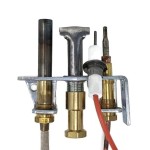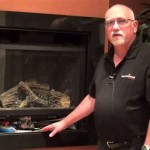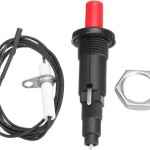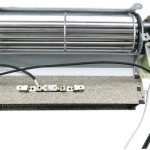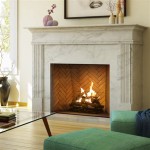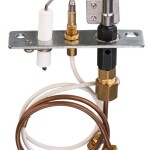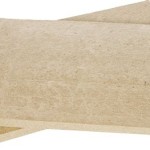The Enduring Appeal of Cast Iron Fireplace Electric Inserts
Electric fireplace inserts have become a popular alternative to traditional wood-burning or gas fireplaces, offering a blend of ambiance, supplemental heat, and ease of use. Among the various styles available, cast iron fireplace electric inserts stand out for their aesthetic appeal, evoking a sense of history and timeless design. This article will explore the features, benefits, and considerations associated with selecting a cast iron electric fireplace insert, highlighting its enduring popularity in modern homes.
Cast iron as a material has a long and storied history in fireplace construction. Its durable nature, ability to withstand high temperatures, and intricate casting capabilities made it a preferred choice for fireplace surrounds and components for centuries. The use of cast iron imparts a sense of solidity and craftsmanship to the electric insert, setting it apart from inserts made from more modern, lighter materials. This inherent aesthetic quality is a significant draw for many homeowners seeking to replicate the charm of a traditional hearth without the associated maintenance and safety concerns.
An electric fireplace insert, in its basic form, is a self-contained heating and visual unit designed to fit directly into an existing fireplace opening. The core components typically include an electric heater, a visual flame effect system, and controls for adjusting heat output, flame intensity, and other features. These inserts are essentially plug-and-play solutions, requiring minimal installation beyond fitting the unit into the firebox and connecting it to a standard electrical outlet.
Key Features of Cast Iron Electric Fireplace Inserts
The selection of a cast iron electric fireplace insert involves considering several key features that contribute to its overall performance and aesthetic appeal. These features range from the heating capabilities and flame effects to the energy efficiency and control options.
Heating Capacity and Efficiency: A primary function of any electric fireplace insert is to provide supplemental heat to a room. The heating capacity is typically measured in British Thermal Units (BTUs) or wattage. Most standard electric fireplace inserts offer a heating range of 4,000 to 5,000 BTUs, capable of heating a space of approximately 400 to 1,000 square feet, depending on insulation and other factors. The heating system usually consists of a fan-forced electric coil heater. The efficiency of electric fireplaces is generally considered to be high, nearing 100%, as virtually all the electrical energy consumed is converted into heat. However the cost of electricity can be a factor in determining overall heating expenses. Some models offer adjustable thermostat settings and timers, allowing for precise temperature control and energy conservation.
Flame Effects and Realism: The visual flame effect is a crucial component of the electric fireplace insert, contributing significantly to its ambiance. Modern electric fireplace inserts employ various technologies to create realistic flame simulations, including LED lights, reflective surfaces, and holographic projections. Some models offer customizable flame colors, brightness levels, and flickering patterns, allowing users to tailor the visual experience to their preferences. The realism of the flame effect is often a key consideration for homeowners seeking to replicate the atmosphere of a traditional fire. The quality of the flame effect can vary significantly between different models and manufacturers, with some offering more convincing and dynamic simulations than others.
Design and Aesthetics: The cast iron construction and design are central to the appeal of these fireplace inserts. They often feature intricate detailing, such as embossed patterns, fluted columns, and decorative grilles, reminiscent of antique fireplaces. The finish of the cast iron can range from a classic matte black to a more polished or painted surface, allowing for integration with various interior design styles. The size and shape of the insert are also important considerations, as it must fit appropriately within the existing fireplace opening. Careful measurement and selection are essential to ensure a seamless and visually appealing installation.
Control Options and Functionality: Modern electric fireplace inserts typically offer a range of control options, including manual controls on the unit itself, remote controls, and even smartphone app integration. These controls allow users to adjust the heat output, flame effects, and other settings from a distance. Some models also include features such as sleep timers, adjustable brightness levels, and safety shut-off mechanisms. The ease of use and versatility of the control options contribute to the overall convenience and enjoyment of the fireplace insert.
Benefits of Choosing a Cast Iron Electric Fireplace Insert
The decision to opt for a cast iron electric fireplace insert involves weighing numerous benefits against potential drawbacks. These benefits often include ease of installation, safety, reduced maintenance, and environmental considerations.
Ease of Installation and Use: One of the primary advantages of electric fireplace inserts is their ease of installation. Unlike traditional fireplaces that require extensive venting systems and structural modifications, electric inserts simply need to be placed within the existing firebox and plugged into a standard electrical outlet. This straightforward installation process makes them an attractive option for homeowners seeking a quick and relatively inexpensive way to add a fireplace to their home. The ease of use is another significant benefit, with simple controls and no need for wood chopping, ash removal, or chimney sweeping.
Safety and Environmental Considerations: Electric fireplaces are inherently safer than wood-burning or gas fireplaces. They eliminate the risk of open flames, sparks, and carbon monoxide emissions. This makes them a particularly suitable choice for households with children, pets, or individuals with respiratory sensitivities. From an environmental standpoint, electric fireplaces produce no emissions directly within the home, contributing to improved indoor air quality. When powered by renewable energy sources, they can also be a more sustainable heating option compared to fossil fuel-based alternatives.
Reduced Maintenance and Operating Costs: The maintenance requirements for electric fireplace inserts are minimal compared to those of traditional fireplaces. There is no need for chimney cleaning, wood storage, or ash disposal. This significantly reduces both the time and expense associated with maintaining a fireplace. Operating costs can also be lower, depending on electricity rates and usage patterns. While electricity costs can fluctuate, the absence of ongoing fuel expenses, such as wood or gas, can make electric fireplaces a cost-effective heating option in the long run.
Considerations When Selecting a Cast Iron Electric Fireplace Insert
The process of selecting the right cast iron electric fireplace insert requires careful consideration of several factors, including the size and style of the existing fireplace opening, the desired heating capacity, the aesthetic preferences, and the budget.
Size and Compatibility: Accurate measurements of the existing fireplace opening are crucial to ensure a proper fit. The insert should be slightly smaller than the opening to allow for easy installation and adequate ventilation. It's also important to consider the depth of the firebox to ensure that the insert will sit flush with the wall or hearth. The style of the insert should complement the existing décor and architectural style of the room. A well-chosen insert will seamlessly integrate into the space and enhance its overall aesthetic appeal.
Features and Functionality: Evaluate the features and functionality of different models to determine which best meets the user's needs. Consider features such as adjustable heat settings, flame color customization, remote control operation, and timer functions. Safety features, such as automatic shut-off mechanisms, are also important considerations. The overall ease of use and convenience of the controls should also be taken into account.
Budget and Value: Cast iron electric fireplace inserts range in price depending on their size, features, and brand. It's important to establish a budget and compare different models within that price range. Consider the long-term value of the insert, taking into account its durability, energy efficiency, and aesthetic appeal. Reading online reviews and comparing ratings can provide valuable insights into the performance and reliability of different models. Investing in a higher-quality insert may result in greater satisfaction and longevity in the long run.
Understanding Power Requirements: While most electric fireplace inserts are designed to operate on standard 120V household circuits, some larger or more powerful models may require a dedicated 240V circuit. It is essential to verify the power requirements of the chosen insert and ensure that the electrical system can accommodate the load. Overloading a circuit can create a fire hazard. If a dedicated circuit is required, it is best to consult with a qualified electrician to ensure safe and proper installation.
By carefully considering these factors, homeowners can select a cast iron electric fireplace insert that provides both functionality and aesthetic appeal, enhancing the comfort and ambiance of their home.

Windsor Electric Fireplace Or Insert

Can You Get A Cast Iron Electric Fire Direct Fireplaces

Can You Get A Cast Iron Electric Fire Direct Fireplaces

Can You Get A Cast Iron Electric Fire Direct Fireplaces

Birkbeck Victorian Style Cast Iron Fireplace

Can You Get A Cast Iron Electric Fire Direct Fireplaces

Small Electric Fireplace Insert Or

Hi500 Hybrid Catalytic Cast Iron Wood Burning Insert By Regency

Royal Integra Electric Cast Iron Fireplace Insert Bonfire

Amantii Lynwood E 50 Cast Iron Freestand Electric Fireplace E50 Na Junction
Related Posts

